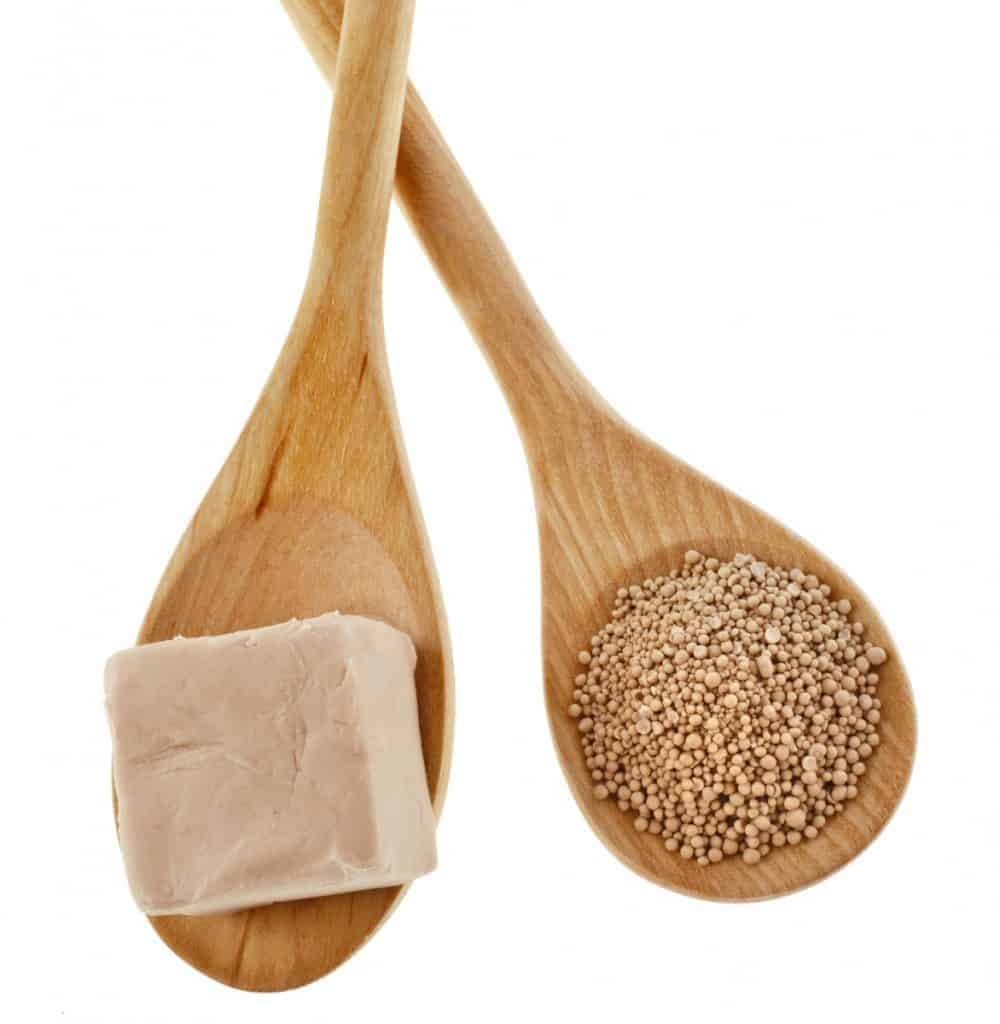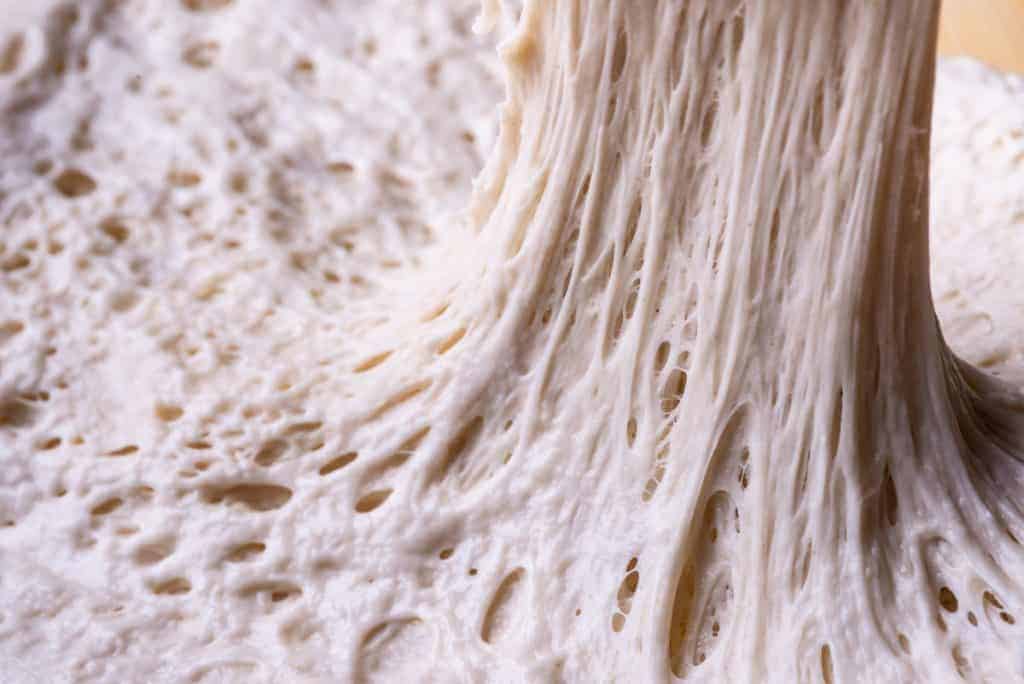This post contains affiliate links.

Cooking can be tricky. All the different types of yeast available do not make baking any easier. Though yeast does come in many forms, some can be used interchangeably.
Pizza crust yeast is a good substitute for regular baker’s yeast. There are no textural, or taste differences between the two. The main difference between regular yeast, and pizza yeast, is the rising time. Pizza crust yeast is specifically curated with different enzymes to make the dough rise faster.
Baking isn’t something that up-front feels like a science experiment that can easily go wrong, but it is. There are plenty of different yeasts, that may or may not be interchangeable, so here’s a little extra yeast knowledge:
What is Yeast?

Yeast is a type of fungus. It’s a single-celled organism, which thrives in warm and wet climates. It converts sugar and starch, into carbon dioxide through the process of fermentation. The carbon it releases is what makes things like dough, rise.
There are two types of yeast: Brewer’s yeast, a wet yeast used primarily in beer making, and baker’s yeast, which is used as a leavening agent. There are then two types of baker’s yeast—fresh yeast and active dry yeast.
Types of Yeast
If there’s a difference between pizza yeast and regular yeast, what other kinds of yeasts are out there? Here are a few:
Cake Yeast:

Cake yeast, or fresh yeast or compressed yeast, does not mean that it is better for baking or for cakes, but actually refers to the state it comes in. Cake yeast comes in a small little cake. It’s about the equivalent to one packet or 2 teaspoons of yeast. It’s typically found in the refrigeration section of your local grocery store. Cake yeast is still used, often by seasoned bakers.
Active Dry Yeast:
Active dry yeast is your classic, probably most used, type of yeast. You’ve probably seen these in either little packets. The most important factor in using active dry yeast is that it must be dissolved in water before it can be used in any type of recipe.
Rapid Rise/Instant Yeast:
Rapid rise yeast, or instant yeast, are those classic jars of yeast. Its a different type of yeast than active dry yeast, this yeast typically has a dough conditioner added. The granules used in rapid rise yeast are also often smaller than active dry.
There are other differences between this yeast and others. Rapid rise yeast doesn’t need to be proofed the way other yeasts do. It can also be substituted for regular yeast if need be.
Pizza Yeast:

Pizza yeast is newer. It has dough conditioners that make the dough less likely to tear, which is important when rolling or tossing out your pizzas. It also makes it a little bit stretchier and has a much faster rise time so you don’t have to wait too long before you’re ready to start topping.
Pizza yeast can also be used for any other type of recipe, without changing the taste or texture of whatever it is you’re making.
If Using Pizza Crust Yeast For Bread:
Although there are differences in types of yeast, pizza yeast will give the same results in baking bread. Thus, when baking using pizza yeast it is just fine to follow the bread recipe as is.
Ultimately, it is the ingredients used in making the bread that changes the flavor more so than the type of yeast used.
Things To Remember When Using Yeast:
Whenever you’re cooking with yeast, there are a few tricks you may not know about.
- Expiration Date is Crucial:
- This would be obvious for something like milk, or the leftover spaghetti you’ve had in your fridge, but with yeast, it’s something often forgotten. Just like spices, yeast does eventually go bad. If you’ve had the yeast for too long, it can go dead, and so can your baking. Check the yeast before you use it, to make sure it’s still fresh.
- Don’t Mix it With Water That’s too Hot or Cold:
- If you’ve found that you’ve done everything right, but your dough just isn’t rising, maybe you used too crass of a temperature. Yeast is very picky and will only work at temperatures between 70°F and 80°F. If it’s too hot, the yeast will be killed off and not rise. If it’s too cold, the yeast won’t move enough to help the dough rise.
- Store it Correctly:
- Yeast is living, so if you don’t store it in the right types of environment it’s going to die. Fresh yeast is best stored in the refrigerator but will die after two weeks. The best place to store it is in the freezer that will put a pause on its lifespan and make it last for longer.
Other Yeast Substitutes
If you don’t happen to have yeast, but have mixed up everything else you could need, there are some substitutes you could use in place of yeast.
- Baking Powder
- Baking powder is the most common, and best, substitute that you could use in place of yeast. Just like yeast, baking powder produces carbon dioxide when mixed with water, and when reduced with heat it will help the dough rise. Unlike yeast though, it has a much quicker reaction time and will not need long before your dough has started to rise.
- Baking Soda, and an Acid
- Baking soda and acid will have the same effect that baking powder does. Just like a 7th-grade science project, a chemical reaction occurs that releases carbon dioxide and will allow for your baked goods to rise. Some acids you can use as mix-ins include; lemon juice, buttermilk, and cream of tartar.
- Sourdough Starter
- A sourdough starter consists of flour and water. Flour and water are mixed together and held in a nice cool place until they begin to form their own yeast. Mixing this in with any baking pursuit you have will help for it to rise. There are plenty of sourdough starter recipes out there, and it can even be a fun side experiment to your baking ventures.

Overall
Yes, you can use pizza yeast for the regular dough. Baking may seem hard in the beginning, but once you get the hang of it you realize that there’s always a fix. Whether you’re creating your own chemical reactions to make bread or switching up ingredients to make muffins. Yeast is much less difficult than it gets credit for.
